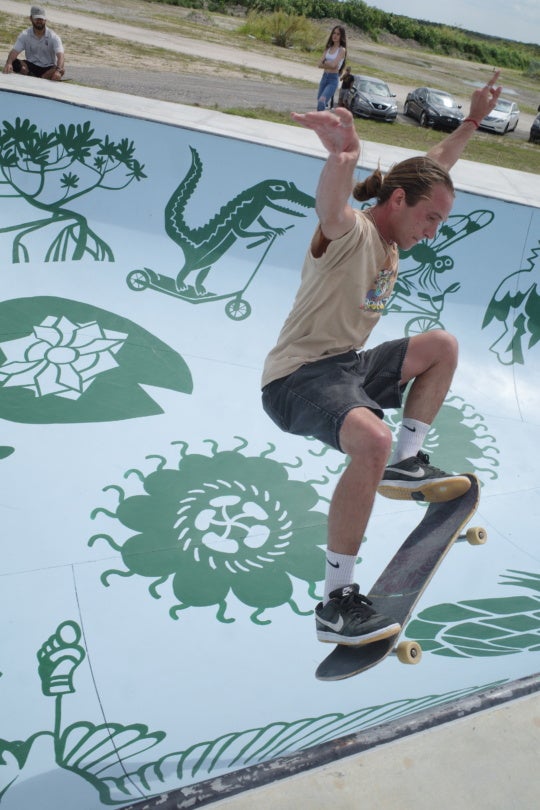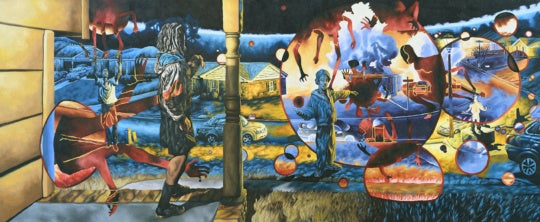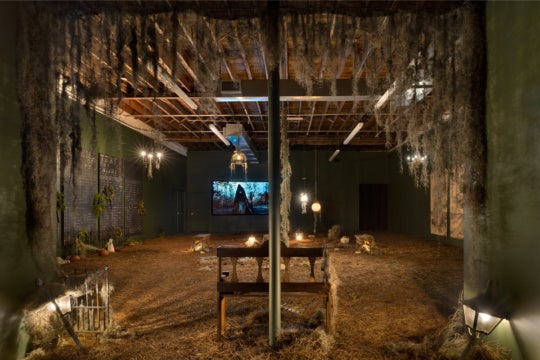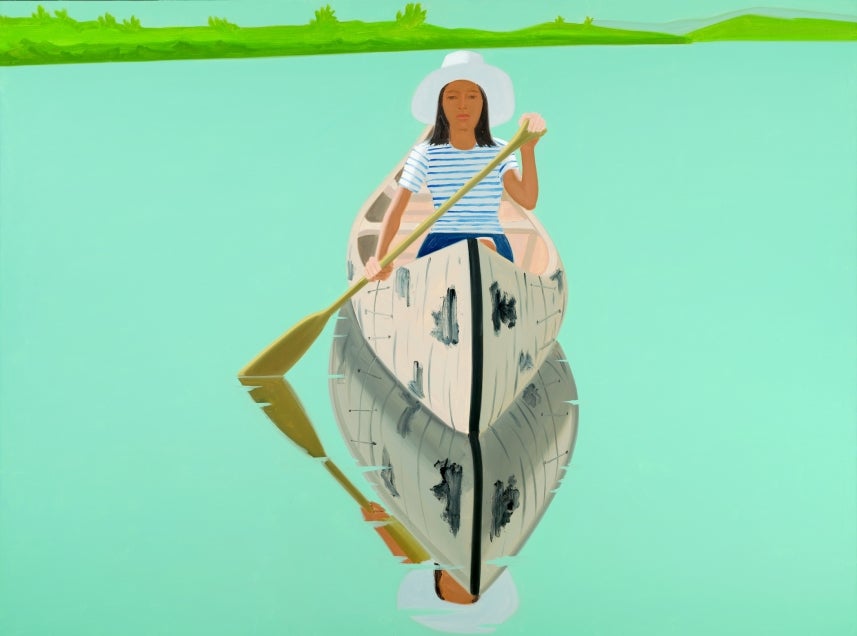
Time, a commodity we never seem to have enough of, comes to a full stop in the paintings of American artist Alex Katz. A major exhibition of the artist’s monumental landscape paintings, “This Is Now,” is on view at the High Museum of Art through September 6. Assembled by Michael Rooks, the High’s curator of modern and contemporary art, the 60 works span the artist’s career, including collages from the 1950s and a selection of the figurative paintings for which Katz is best known. The exhibition reveals Katz’s ability to capture the brief moment when perception precedes cognition.
A lifelong New Yorker, Katz graduated from the Cooper Union School for the Advancement of Science and Art in 1949. During a residency that summer at Skowhegan School of Painting & Sculpture in Maine, he began painting outdoors, captivated by the experience of the changing light of the landscape. This direct encounter with a fleeting image became foundational to his painting process. A generous number of these small studies of nature that inform the monumental landscapes are included in the show.
As Katz was coming into his own as an artist in the early 1950s, Abstract Expressionism dominated the New York art scene. Defying the prevailing trend, he forged a contradictory painting style that sought a cool objective realism. While acknowledging the influences of Jackson Pollock, Mark Rothko, and Franz Kline, Katz explained his oppositional stance as a desire to “move to a place in art that was unstable and terrifying,” as recounted by Rooks in the accompanying exhibition catalogue.
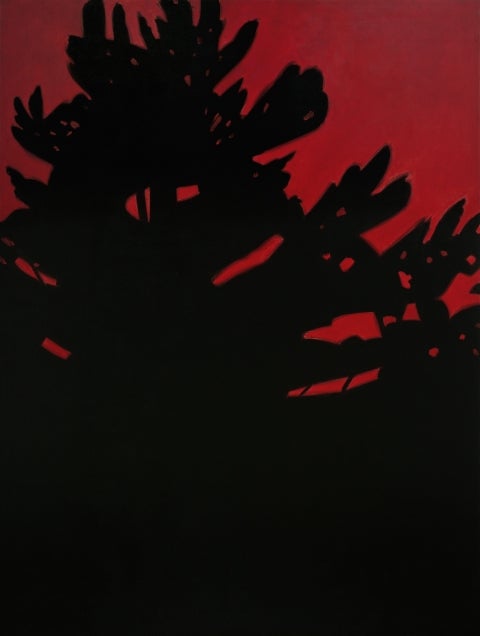
In the figurative painting Good Afternoon (1974), placed at the entrance to the galleries, we are greeted by an expressionless young woman — his wife Ada, who appears in many of his works — paddling a canoe on a motionless blue lake. Drained of emotional markers, the frozen moment harbors unseen tensions. Like an underground river that creates caverns beneath our feet, a subtle abstraction threatens to destabilize the rational structure of the image. Disrupting the symmetry, the oar and its reflection cut diagonally across the central figure. Cast in a cool light, the subject hovers between representation and abstract formalism.
Katz has consistently painted the landscape as a stand-alone subject. In the transition from his sketches to the monumental paintings, which he calls “environment paintings,” the influence of early abstraction is evident. The paintings are crazy big, the largest 30 feet long. They exceed by a wide margin the scale of all but a few Abstract Expressionist artists, treating flowers, fields, trees and brooks on the scale of history painting. The flat fields of color echo Rothko’s luminous surfaces. The images are unbounded by the edges of the canvas, recalling Pollock’s overall drip paintings.
The tremors that lie beneath the placid surface of Good Afternoon erupt in full force in the landscape works of the 1990s. In Black Brook 11 (1990), thick white brush strokes fly over the painted black surface in a nearly abstract image of water rushing over rocks. Ghostly boulders in dark gray shades loom in the background. Katz has transformed the Study for Black Brook 9 into a monumental close up stripped of all nostalgia but the flickering light caught by his brush.

Throughout the exhibition, Katz plays with the perceptual shift between image and abstraction. The painting Wet Night (1996) consists of layers of tangled winter branches against a brown city sky. Painted white raindrops flicker across the surface, collapsing the illusion of space. The painting catches us in a moment of wonder. In Twilight (1998), a gift by the artist to the High, Katz reduces emotive detail so that we might also experience that fractional moment of perception before cognition limits our ability to truly see.
Maggie Davis is an artist and scholar living in Roswell, Georgia.

